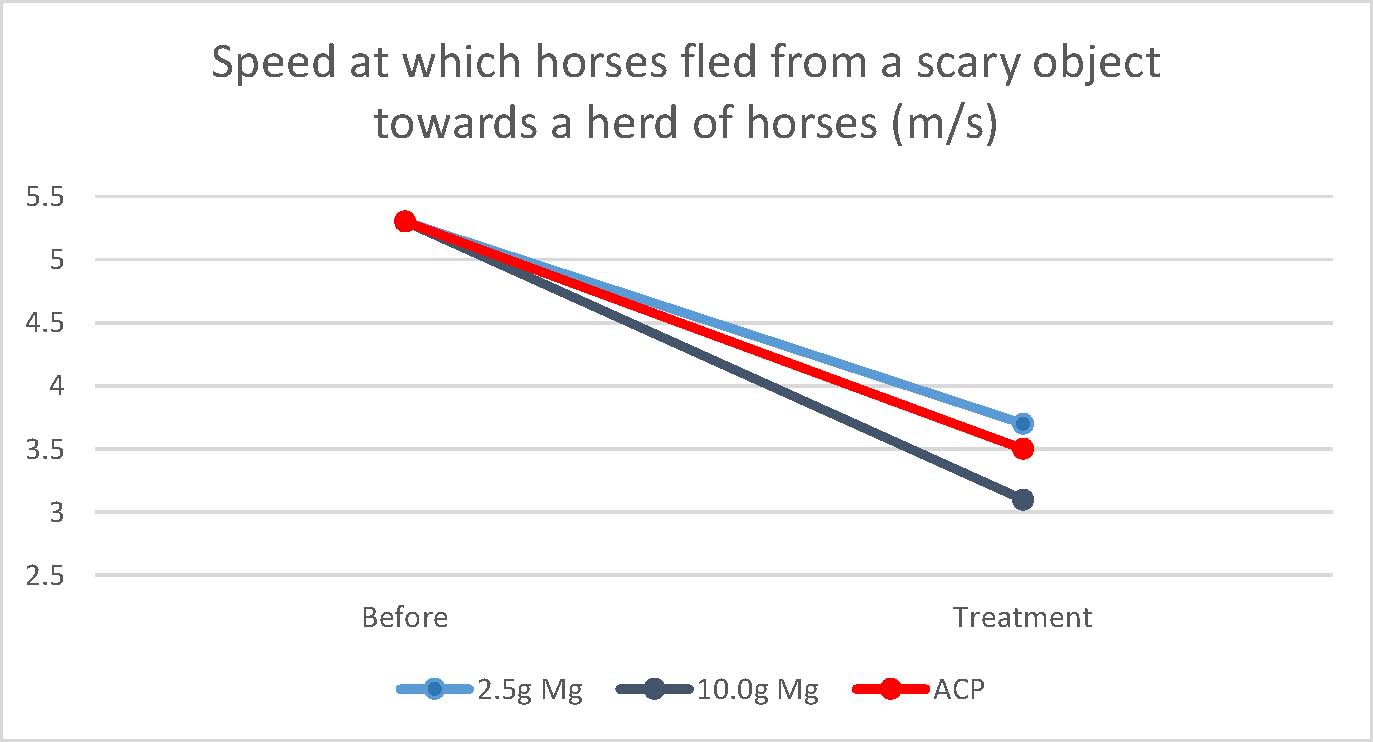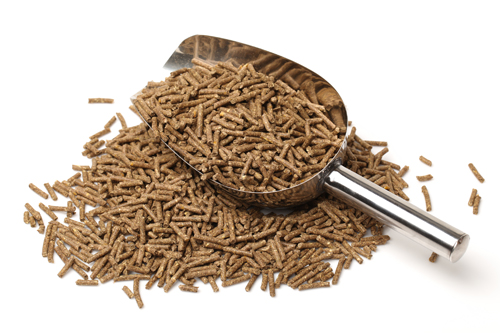
If you would like to read this in glossy magazine format or to download it click here.
Updated 28th November 2019
The added magnesium in your formulated feeds, supplements and calmers could be doing far more harm than good. The science says it shouldn't be there.
Magnesium based calmers are by far the most common in the equine supplements market, yet experience from client feedback tells us that magnesium fails in far more horses than they help. A small trial we conducted in 2008 suggested that magnesium calmers will only work in approximately 25% of horses – a pretty poor success rate!
So, why are magnesium calmers the market leaders? Probably because they appear to affect the horse more than the other technologies on the market such as tryptophan, B group vitamins and herbs. But do they achieve the effect you want? Perhaps they are simply an example of hope over experience! Millions of pounds are effectively being poured down the drain each year with the purchases of these calmers. Surely there must be something more effective or could this be a case of "the earth is flat until someone tells us otherwise"?

Why do feed and supplements firms add magnesium to their products?
It would appear that many feed and supplement companies have been adding and selling increasing amounts of magnesium in the hope that it will improve behaviour. Yet it has been overlooked what excess magnesium does inside cells. The feed company consensus seems to be that magnesium is a harmless additive - yet the science says "the more you feed the more builds up in the horse". Most feed companies will be offended by this statement, as they will probably say that they "only use scientifically proven levels of nutrients in their formulations". But grass and hay, even from low magnesium soils, almost always provides far more than the recommended level of magnesium. There is no need to add more!
Instead, the only firms that are actually following the science, are the ones that add no magnesium to their feed products at all. Such firms do exist but the major players still add magnesium in contradiction of the science.
That seems like a controversial statement, but the National Research Council of America (NRC) publishes a book called the “Nutrient Requirements of Horses”. This is the equine nutritionist’s bible. In this book are tables of the recommended levels of many different nutrients in horse diets and the amounts of to be found in various forages, grains etc. Of the 103 listed ingredients only corn cobs, bread waste and oils don’t provide the RDA for magnesium and most feed ingredients provide multiples of the RDA.
Some people have their grass and hay analysed and sometimes they show magnesium levels that are described as “low”. Yet when we look at the reports, even low magnesium pastures and hay contain the RDA comfortably as far as horses are concerned. So, if we believe the NRC, there is no reason to add magnesium to formulated feeds. So why do so many feed companies do it?
There are generally two arguments put forward for this:
1. If diets are high in calcium, magnesium absorption is impaired leading to a risk of deficiency.
Experiments carried out by the Americans Hintz & Schryver way back in 1972 and 1973 make it very clear that the balance between calcium and magnesium in the diet of horses does not affect the absorption of magnesium. In fact the diet they tested that had the most calcium actually resulted in the highest amount of magnesium retained in the horse. In this work the ponies were fed the different magnesium diets for a month each. Other researchers have done similar work over different periods - all with the same results. Some Dutchmen working with foals had a 16 week time frame, an Australian, Jess Dodd, looked at a few hours or days and in our own work we have horses entering our trials having been on high magnesium diets for months or years.
2. Excess magnesium ingested is simply excreted in the droppings or the urine.
Hintz & Schryver looked at this too and it is clear from their work that whilst excretion increases as the diet level increases, it doesn’t do so enough. The more magnesium you feed, the more is retained in the body and specifically in the blood. Ponies fed not much more than double the RDA of magnesium had blood magnesium levels that we would these days regard as “above the normal range”.

This graph from the Hintz & Schryver 1972 paper clearly shows how the more magnesium you feed (bottom axis) the more is retained (left axis).
Why people THINK magnesium works
Magnesium is a sedative. It has been used in anaesthesia in both horses and humans for decades. The mechanisms by which it has this effect are pretty well understood (blocking NMDA channels and calcium receptors). In effect it prevents the normal switching on of cellular processes inside cells all over the body. When this happens in the brain, the horse is sedated; think of it as a chemical brain impairment. It is because of these issues, injectable magnesium is on the FEI’s prohibited substances list.
There is a very reasonable question to ask. Can we achieve a similar sedative effect with oral magnesium? Jess Dodd in Australia has gone a long way to suggesting we can. She measured how fast horses ran away from an acute scare and compared the effect of magnesium supplementation with the veterinary sedative Acepromazine (ACE, ACP, Sedalin). She then found similar results when using both 2.5 grams and 10 grams of magnesium.

So if you have a spooky horse and you give it more magnesium, you may well think that it is calmer. In fact, it is likely to be mildly sedated. Of course, some horses sedate really nicely and are fine to ride. However, our rider and customer feedback suggests many horses become more anxious and less able to cope with pressure when given surprising small amounts of supplementary magnesium.
We shouldn't be surprised by this. The biochemistry and physiology is really clear that EXCESS magnesium impairs brain function (by blocking NMDA channels and calcium receptors). The FEI lists injectable magnesium as a sedative (prohibited in competition) and the science referred to above shows that the same can be achieved orally.
The alternative approach is to improve brain function. Our trials and customer feedback show that horses with good brain function quickly learn the world isn't full of scary threats. They become less anxious and focus on their work. This is a very positive approach to "calming" and can be achieved with BREAK FREE or its derivatives BREAK FREE Plus and BREAK FREE Elite.
Not all magnesium is the same
In the UK we have managed to carefully monitor and record the dietary magnesium levels of nearly 25,000 horses. Our view is that horses don't overdose on the naturally occurring magnesium in green grasses, herbs and hay - after all they have had millions of years to work this out. But artificial additives put in feeds (mostly Mag Oxide) and those used in supplements (often chelated magnesium) seem to be the ones that cause the issues. For riders the problem is that many magnesium supplemented feeds do not list the additive on their labels or web sites.
By the way this doesn't make herbal calmers and feed all good. Many work much like Diazepam (Valium) and also impair brain function. But that is a different story for another article.

In Summary
Many horses fed formulated feeds are already sedated by the magnesium they contain. Consider a multi vitamin, mineral and amino acid supplement like BREAK FREE Plus instead. At just 40 grams a day this is a VERY economical addition to diets that can be created using products other than expensive formulated feeds.
Add BREAK FREE Plus to a diet without formulated feeds. Click here for some ideas how to do that.
At EquiFeast we are committed to getting your horse's brain working as nature intended - not sedating it.
We strongly recommend that new customers/horses start by filling in our FREE Diet Review Form.
Related articles:
The Future of the Horse Calmer: Magnesium Vs Chelated Calcium
Creating diets without added magnesium
